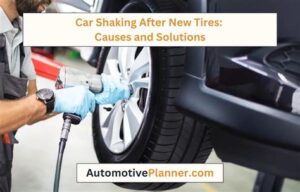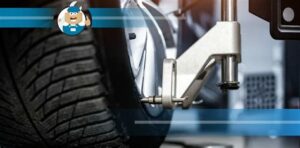How to Align Car Hood
Proper car hood alignment is essential for both the aesthetics and functionality of your vehicle. An improperly aligned hood can lead to gaps, inefficiencies, and even safety concerns, impacting everything from airflow to engine access. Whether you’re a seasoned DIY enthusiast or a curious car owner, understanding the basics of hood alignment is crucial. In this article, we will delve into the fundamental aspects of aligning your car hood, identify common signs of misalignment, and equip you with the essential tools needed for a successful alignment. Follow our step-by-step guide, discover common pitfalls to avoid, and ensure your vehicle shines both in appearance and performance. Get ready to enhance your car’s exterior while maintaining its integrity!
Understanding Car Hood Alignment Basics
Car hood alignment is crucial for both aesthetics and functionality. A properly aligned hood not only enhances the visual appeal of your vehicle but also ensures safety and efficient operation. Misalignment can lead to operational issues; for instance, it might prevent the hood from closing securely, potentially resulting in accidents or damage during driving.
When we discuss how to align a car hood, it’s essential to understand the fundamental components involved. The primary elements that contribute to proper hood alignment include the hinges, latch, and adjustment points. The hinges allow the hood to open and close smoothly, while the latch secures it in place when closed. Adjustment points allow for fine-tuning to correct any discrepancies in alignment.
A common misconception is that hood alignment is solely a cosmetic issue, but it plays a critical role in aerodynamics and engine cooling. An uneven hood can hamper airflow, affecting engine performance and fuel efficiency.
Improper alignment can occur due to various reasons, such as fender benders or wear and tear over time. By understanding these basic principles of hood alignment, you will be better equipped to identify and address any misalignment issues. This knowledge will also serve as a foundation as you learn how to effectively align your car hood in the subsequent sections.
How To Identify Misalignment Signs
When it comes to car maintenance, understanding how to spot signs of hood misalignment is crucial. A misaligned hood can affect the vehicle’s appearance and functionality, making it essential to address any issues promptly. Here are some key indicators that your car hood may be misaligned:
- Inconsistent Gaps: Examine the gaps between the hood and the fenders. If they are uneven, this could indicate misalignment.
- Hood Doesn’t Close Properly: If the hood doesn’t latch or close completely, it may be misaligned.
- Paint Damage: Look for scratches or chips on the edge of the hood or fenders, which can occur when there is a misalignment.
- Unusual Noises: Listen for rattling or clunking sounds when driving, as a misaligned hood may not sit securely.
- Increased Wind Noise: If you hear more wind noise than usual while driving, this might be a result of improper hood alignment.
By being aware of these signs, you can take timely action and ensure your car hood is aligned correctly, which contributes to both safety and aesthetics.
Tools Required For Proper Hood Alignment
To ensure accurate and effective hood alignment, having the right tools at your disposal is crucial. Below is a list of essential tools you will need:
- Measuring Tape: A measuring tape helps you determine the exact distance from the hood to the fenders and the front of the car.
- Socket Set: A complete socket set will allow you to easily remove and adjust bolts that secure the hood in place.
- Phillips and Flathead Screwdrivers: These screwdrivers are necessary for making fine adjustments and securing any fasteners.
- Hood Prop Rod or Support Stands: Using a hood prop rod or support stands can help safely hold the hood in place while you work.
- Leveling Tool: A leveling tool will ensure that your hood is aligned correctly and sits flush with the car’s body.
- Safety Gear: Don’t forget your gloves and eyewear for protection while working.
Having these tools readily available will facilitate a smoother process when learning how to align your car hood effectively.
Step-By-Step Guide To Align Your Car Hood
Aligning your car hood properly can enhance both the aesthetics and functionality of your vehicle. Follow this how to guide to align your car hood effectively:
- Gather Your Tools: Before you start, ensure you have all necessary tools at hand, such as a socket wrench, screwdriver, tape measure, and possibly a helper to assist with lifting the hood.
- Inspect the Current Alignment: Check how your car hood is sitting. Look for gaps between the hood and the fenders. Assess if the hood is sitting too high, too low, or tilted to one side.
- Loosen the Bolts: Using your socket wrench, carefully loosen the hood hinge bolts. Do not remove them completely, as you will need to adjust the hood’s position before tightening them again.
- Adjust the Hood: With the bolts loosened, gently push or pull the hood into the correct position. Make sure it is aligned evenly with the fenders and sits flush at the front.
- Check the Alignment: Close the hood and stand back to check the alignment visually. Use a tape measure to ensure the distances from the edges of the hood to the fenders are even.
- Tighten the Bolts: Once you are satisfied with the alignment, carefully tighten the hood hinge bolts while holding the hood in place to prevent it from shifting.
- Final Inspection: Open and close the hood several times to ensure it operates smoothly. Check again for any misalignment and make further adjustments if necessary.
Once you’ve followed these steps, your car hood should be well-aligned, providing both a perfect fit and a polished look to your vehicle.
Common Mistakes To Avoid When Aligning Hoods
When you are learning how to align your car hood, it’s crucial to avoid common pitfalls that can lead to further issues down the road. Here are some mistakes to watch out for:
- Skipping the Preliminary Inspection: Before making any adjustments, it’s essential to thoroughly inspect the hood and surrounding components. Failing to check for pre-existing damage can lead to incorrect adjustments.
- Over-tightening Hardware: While it might seem like a good idea to ensure everything is secure, over-tightening bolts can cause misalignment and even damage to the hood or mounting points.
- Not Using a Level: A level is a simple tool that can drastically improve your alignment accuracy. Skipping this step can result in a visually unappealing hood and potential functional issues.
- Ignoring Gaps: It’s imperative to check the gaps around the hood. Many people focus only on closing gaps and overlook the symmetry. Proper alignment means maintaining equal gaps on both sides.
- Rushing the Process: Hurrying through the alignment can lead to mistakes. Take your time to ensure every adjustment is precise for the best outcome.
- Failing to Test Adjustments: After making adjustments, always close and open the hood to test its operation. Failing to do this can leave you with problems that could have been easily corrected.
By avoiding these common mistakes, you’ll improve your chances of achieving a well-aligned hood that not only looks great but also functions properly.
Frequently Asked Questions
Why is it important to align a car hood?
Aligning a car hood is crucial for aesthetic reasons, ensuring that the hood sits evenly with the fenders and frame. Proper alignment also benefits functionality, preventing potential damage or misalignment of other components.
What tools do I need to align a car hood?
To align a car hood, you typically need a socket set, screwdriver, a measuring tape or ruler, and possibly a flashlight for better visibility in tight spaces.
What are the common signs of a misaligned hood?
Common signs of a misaligned hood include uneven gaps between the hood and fenders, the hood not closing or latching properly, and visible misalignment when viewed from the front of the vehicle.
Can I align my car hood myself, or should I hire a professional?
Many car owners can align their hoods with the right tools and guidance. However, if you’re uncomfortable or unsure, hiring a professional is always a safe option.
What steps should I follow to align my car hood?
Begin by loosening the hood hinges with a socket set. Next, make small adjustments to the hood’s position by raising or lowering it, and tighten the hinges once aligned. Finally, check the gaps and repeat as needed for precision.
What could happen if I don’t align my hood properly?
Improper alignment can lead to issues such as hood flutter at high speeds, problems with opening and closing, and potential damage to components like the windshield or headlights due to impact.
How often should I check the alignment of my car hood?
It’s a good practice to check the alignment of your car hood during regular vehicle maintenance or after any significant bodywork or collision repair to ensure everything is in proper condition.





